Martin Kreuch – Black Mirror interview
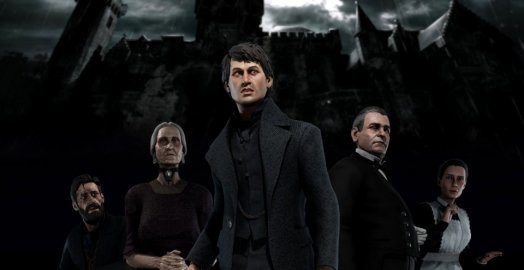
At gamescom 2017, I had the welcome opportunity to meet Martin Kreuch – a producer at publisher THQ Nordic – to bug him with loads of questions about the reboot of the Black Mirror series. The newest game in the franchise is currently being developed by German studio KING Art, who are not only the acclaimed developers of adventures like The Book of Unwritten Tales and The Raven, but were also significantly involved in the development of Black Mirror 2. If you are wondering what to expect from a new Black Mirror game, read on as our interview with Martin should answer most of your burning questions.
Ingmar Böke: So the secret isn’t a secret anymore: you and KING Art are currently producing a new Black Mirror game. Please describe your approach to the project, and tell us in what way it’s connected to previous games in the franchise.
Martin Kreuch: We’re rebooting the franchise, which means that the new Black Mirror isn’t connected to the plot or characters of the original games. The previous titles were pretty self-concluded story-wise. Also, a lot of mythological details were already revealed within that universe. So it’s neither a sequel nor prequel.
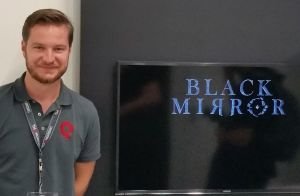 |
THQ Nordic's Martin Kreuch at gamescom
|
Of course, we have had lots of discussions when it comes to the question of how we could create something that would appeal to old and new players alike: Are there supernatural elements? Do ghosts exist within this universe or not? Could it be that the characters might just be insane? How do you integrate aspects like that while making the game interesting for the old players without confusing the new players?
Even though we are aware that some people strongly dislike reboots, we ultimately ended up deciding to reboot the series and create a completely new universe. The new game takes place in Scotland, as opposed to the previous titles which took place in England, and even though the family is still called Gordon, they’re not related to the Gordons of Black Mirror 1-3.
Ingmar: You’re also covering new territory when it comes to the gameplay.
Martin: Of course, this is also a tricky subject. The aspect of nostalgia is certainly important. Players remember games that they played and enjoyed in the past in very special ways. At the same time, there are aspects about point-and-click adventures that aren’t that popular among many players. This is also related in part to playing with a controller. Modern adventures like Life Is Strange, Until Dawn and Sherlock Holmes: Crimes & Punishments have left quite an impression on our approach.
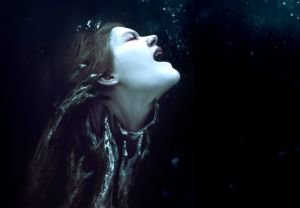 |
Concept art for Black Mirror reboot. Creepy. |
Black Mirror has always been known for distilling elements from atmospheric horror classics in the vein of Edgar Allan Poe or H.P. Lovecraft, and this is exactly what we wanted to do in the new game. Players who are into jump-scares and gore will probably have to look for different games. What we have is a rather psychological type of horror that puts an emphasis on eerie atmosphere. All of the characters are pretty twisted. Seemingly, being near to the castle doesn’t have a positive effect on people. If someone, for instance, was already an irascible person before, it’s likely that person is ultimately going to turn mad at this place. While we were inspired by scary movie classics like The Haunting and Woman in Black, the original Black Mirror games definitely had the biggest impact on the mood in our game; particularly the second and third parts, which still look very good today due to their high level of detail.
At gamescom, we’re primarily showing the castle. The game does not entirely take place in the castle, though, but also in its surroundings. In contrast to something like the Sherlock Holmes games, we really want players to feel like, “you leave the castle, and you are outside in the garden now. You walk through the garden, and now you’re in the woods.” Instead of having a kind of chopped-up world, we’re pretty much having a correlating world, which also gives you some freedom to explore it.
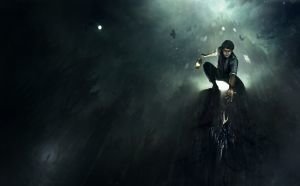 |
Black Mirror to focus on chilling psychological horrors inspired by the likes of Lovecraft and Poe |
We do not want fans of the old games to feel as if the gaming experience has been entirely stripped-down. The game has some chapters that contain several puzzle chains, which allow you to go back-and-forth between them, and work on these puzzle chains simultaneously. For some players, this might feel very complex as we are aware that some of them like to be guided through a game all the way through. However, we also want to stay true to the franchise when it comes to the aspect of players wanting to reflect on puzzles and their solutions. In our case, it depends on what’s currently going on in the story. If there is a chase sequence, you don’t want to stand still to combine object A with object B. So in fast-paced situations you’ll rather have something along the lines of Quick Time Events and button-mashing. You know, some games have puzzles where you know the solution to a puzzle nearly right away. The actual appeal is the thing that the solved puzzle is going to trigger. I’d like to call this a typical Uncharted puzzle. An adventure puzzle, on the other hand, is rather something that’s going to make you think about what you need to do or that makes you talk to other characters before you can solve the puzzle. Of course, we’ll have stuff like that in the game!
Ingmar: The development team is no stranger to the atmosphere of the Black Mirror universe, having been heavily involved in the design of Black Mirror 2, though many people aren’t aware of that. What exactly did KING Art do on Black Mirror 2?
Martin: The KING Art team penned the original concept for Black Mirror 2. Achim Heidelauf was the executive producer of Black Mirror 2 and now is again a producer on the new Black Mirror, though as a freelancer, not a permanent member of KING Art.
Ingmar: Let’s find out more about the story.
Martin: The story pretty much starts with the suicide of the protagonist’s father. Our main character David Gordon has been raised in India, far away from Black Mirror castle, and didn’t have a good relationship with his father. When David arrives at the castle as his father’s heir, he has only heard that his father supposedly had gone insane and killed himself. David doesn’t know anything about the family history and now faces a family he has never met before, and who aren’t happy about his appearance. While the family is rather interested in heritage-related aspects, David ends up deciding that he wants to find out more about his father’s past and unravel the reasons for his suicide.
Ingmar: German writer Anne von Vaszary worked on Black Mirror 2 as well as Black Mirror 3. Is she a part of the team again?
Martin: No, this time we worked with a writer from Scotland, so this is the first Black Mirror game that was originally written in English. Of course, KING Art have a long history when it comes to German adventure games, so we put a lot of effort into the German translation and voice-overs as well. The thing is, in the original English version, the accents of characters are very important, and we wanted to get this right. We don’t have accents in the German version, but the thing that both versions have in common is that the voice actors had quite some freedom and there was a certain space for improvisation. The result is that both releases have a distinctive flair of their own.
Ingmar: You mentioned controllers as an input device earlier. Is it also possible to play Black Mirror with a mouse?
 |
There will be no pointing-and-clicking David Gordon around Black Mirror castle |
Martin: There are no point-and-click controls which enable you to play the game just with a mouse, but we have a direct control system that allows you to play by using a combination of the mouse and the WASD keys on the keyboard. We do want players to be able to use a mouse, but of course point-and-click controls are connected to point-and-click gameplay, where you must search the environments to find interactive elements. I think that this kind of gameplay isn’t the most important element for a lot of adventure players anymore. Also, it doesn’t harmonize with a controller. We have decided to put a stronger focus on staging instead.
Ingmar: Can you give us an idea of the interactive dialogues?
Martin: When it comes to the multiple-choice replies, we have looked at modern adventures as an inspiration. There aren’t a lot of different reply options, and we tried putting them into the game in a way that’s as natural as possible. There are a lot of close-ups during dialogues, which means that we’re zooming in a lot more than we did before. The decisions you can make within dialogues are not going to send you on totally different story branches or something like that. Your behavior in conversations is rather important when it comes to your relation to other characters. Depending on how you act, they might treat you differently or you might receive a bit of background knowledge you might have missed by using a different approach. It’s not like our dialogues determine life and death, though.
Ingmar: What kind of inventory does the game have?
Martin: We’ve changed the inventory in comparison to the original games. You can twist and turn the objects. There are fewer objects in the game than in the point-and-click adventures, but they’re more interactive and sometimes you’ll have to find little details on them. We do have item combination puzzles, but when we have them, they’re usually on the spot. For example, there’s a table and you need to combine several objects on the table. The character won’t put huge items like an axe into his pockets because it breaks immersion.
Ingmar: How are you handling situations where David Gordon can die?
Martin: We made every death unique, so if you like, you can kill off David to see all those deaths; we know a lot of people like to do that. When David dies, you won’t lose too much progress, we just want to bring in some more tension and pressure.
Ingmar: Can you give us a rough idea of how long the game is going to be?
Martin: The game is about 10 hours long if you listen to most of the dialogues. If you don’t, you can obviously finish it a lot quicker. We have a price point of €29.99 on PC, Mac and Linux and €39.99 on consoles. It is a shorter game, so we didn’t want to go for a full-price title.
Ingmar: Is this game already paving the way for potential sequels?
Martin: The story of the game is pretty much enclosed, so it’s not very open-ended, but there are little seeds planted in there for more games, of course, so we do hope to make a full trilogy. Hopefully, Black Mirror will be as well-received as the original games. THQ Nordic did the Black Mirror Collection, so we know from that that there are still lots of fans of the franchise, and it’s a very popular game in the genre. We really hope we manage to capture that gothic-horror feel; the creepiness and the eeriness, you know?
Ingmar: What kind of work is left to do until the release?
Martin: Mainly, it’s about lighting. Light and darkness is such a big thing in these games because the atmosphere is very much influenced from black-and-white movies or other old movies. We will definitely go through the whole game again, and have a look at where it’s not dark enough or perhaps too dark. That’s mainly what’s left to be done.
The reason why we announced Black Mirror so late is that we know that there are gamers who dislike reboots a lot. We wanted to make sure that once we announced this reboot we’d immediately be able to show what the plan behind it is, and what we’re trying to keep and bring to the franchise. It’s not like we don’t like point-and-click adventure games, because we have done several great point-and-click adventure games. It’s more that we really think that in this kind of genre [the horror genre], there are a lot of things that you can do with a modern adventure game that you can’t do with a point-and-click adventure game, and we want to bring in more players who will hopefully enjoy the experience.
Ingmar: A few years ago, a TV show called Black Mirror – which is not connected to the games – went on the air, and became quite popular in the meantime. Has this caused any confusion or complications to this point?
Martin: Of course a lot of people ask about it or even comment, “They stole the name!!” But usually, as we communicate very clearly that we are not connected to the TV series, there are other people who quickly respond that if we stole the name, it seems we also built a time machine and stole it years before the TV series even went into production. (smiles)
Ingmar: What release timeframe are you currently aiming for on the respective platforms?
Martin: The game will be out November 28, 2017 on all platforms – PC, Mac, Linux, Xbox One and PS4.







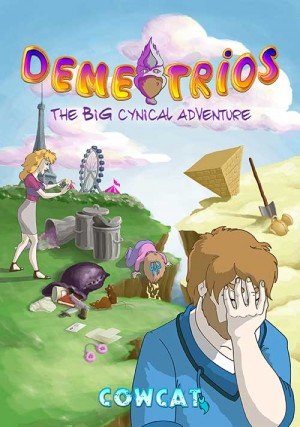
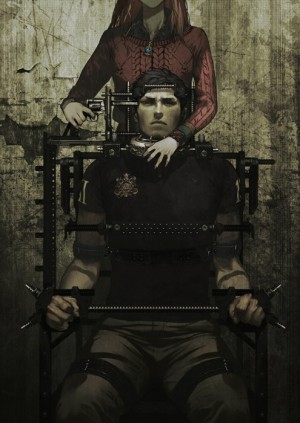
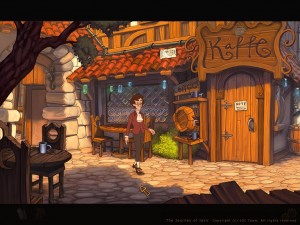

![Event[0] - Game Review](https://cdn.nivoli.com/adventuregamers/images/screenshots/31241/image001__medium.jpg)



